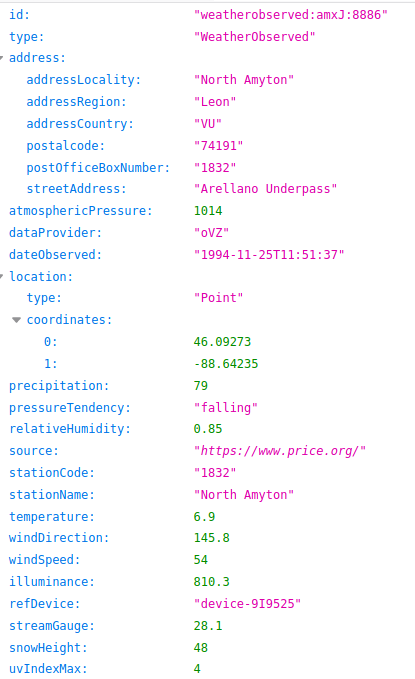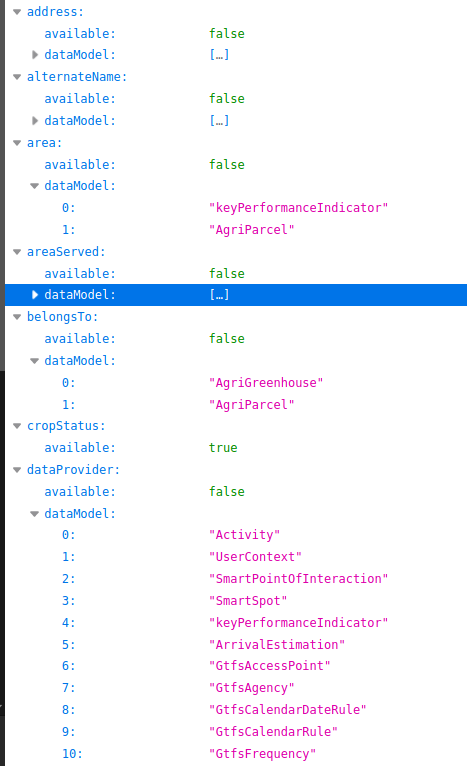We are in the way of creating a service for testing purposes for getting payloads according to a data model.
The service is under debugging, so it cannot be trusted for production purposes. Let us know issues here
In order to access it has to access this URL (https://smartdatamodels.org/extra/payload_generator.php) with these two parameters token and dataModel
I.e. with a weather observation in the link below:
https://smartdatamodels.org/extra/payload_generator.php?token=sSdme8954c9&dataModel=%22WeatherObserved (reload page several times for generation)
In the production stage, there will be necessary a token in order to, if necessary, to limit the access for a single user. Additionally, it should be available the options of normalized and keyvalues and for the NGSI v2 and LD.







